Table of contents
General Meaning of the National Day of Umbanda
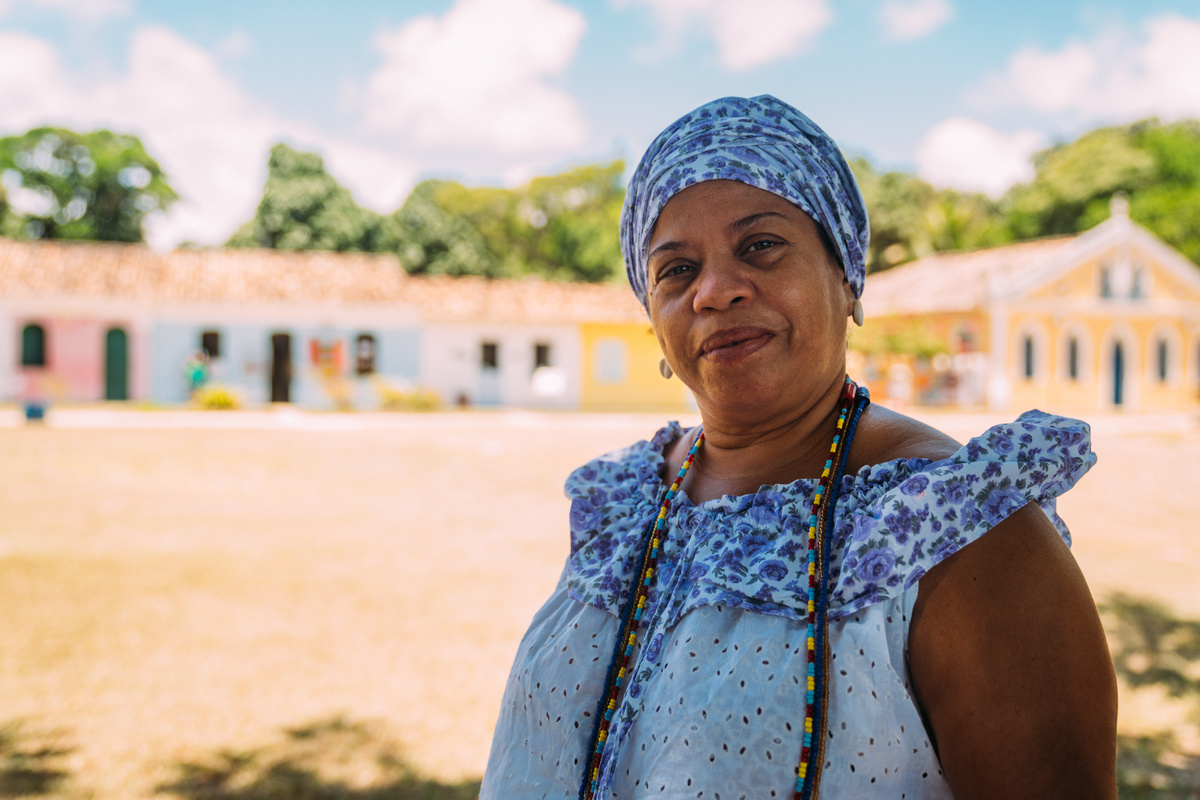
Umbanda was a religion that suffered and still suffers today from persecution and prejudice in relation to its foundations and rituals. Because it preaches charity and goodness, it has always struggled to be recognized and especially respected as a religion that practices peace and fraternity.
The National Day of Umbanda represents the officialization of the conquest of this struggle, making it Brazilian heritage and showing that it is a religion that has its spiritual mission on earth and in Brazil.
On this day, all practitioners and sympathizers of the religion celebrate its liberation, which now being recognized under the Law, has its duties and rights. Even with this victory Umbanda has a great history that will be told in this article.
National Day of Umbanda, Decree 12.644 and differences with Candomblé
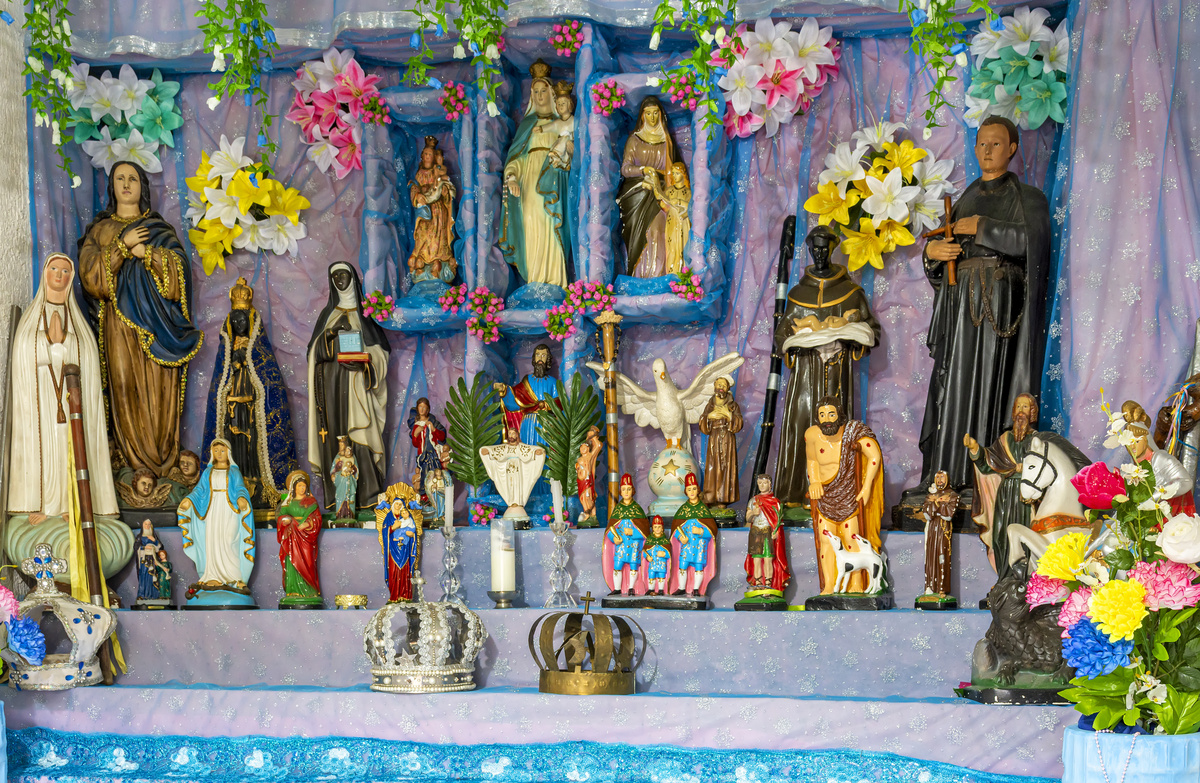
Umbanda gained in 2012 the recognition of its national day. A new religion compared to others that are in Brazilian soil since its discovery and even before that with the Indians. Umbanda is a religion that was for a long time persecuted and in one period was almost extinct.
However today the number of believers and centers that develop the religion has been increasing, showing that Umbanda is more alive than ever.
This article will explain the journey to this conquest and the initial foundations of this religion, which embraced many others and carries within it the reflection of Brazil, a giant country by nature and embracing many different cultures and peoples, making it a country mixed and rich by this mixture. This is Umbanda, a religion that has the face of Brazil.
The religions that inspired Umbanda
Umbanda was announced inside a spiritist center, by a Brazilian Indian, through a Catholic medium. In its first session, an African black man incorporates and at that moment it was possible to understand crucial points for the foundation of Umbanda and why Brazil was chosen to be the cradle of this religion.
Umbanda has its own foundations, independent and aggregated by spirituality. It was not born as a branch of a religion, but adopted the foundation of several, thus showing that God is one and the union makes the strengthening. This union was made between Catholicism, Spiritualism, the Cult of Nation, the Shamanic Rituals, Gypsy Rituals and among others that can be observed.
Decree of Law 12.644
In 1941 the first national congress of Umbanda took place, 33 years after the first manifestation of the Caboclo das 7 encruzilhadas. This congress was important to define some points about the religion, but mainly for paving the way for the 1st Annual Congress of the National Deliberative Council of Umbanda (CONDU) held in 1976.
In this congress it was defined that November 15th would be the National Day of Umbanda. The law for the recognition of this day came in the year 2012 when the then president signed Law 12.644 making official the National Day of Umbanda.
Differences between Umbanda and Candomblé
Candomblé or the Cult of Nation is one of the religions that most donated knowledge and fundamentals to Umbanda, perhaps one of the most important donations have been the Orixás. Umbanda is a religion that also worships the Orixás that were brought from Africa by slaves, but despite the name, the deities have different meanings for the two religions.
Candomblé is an Afro-Brazilian religion, which aims to maintain the traditions and teachings of black Africans and practiced at least 2000 years BC. In Candomblé the use of animal sacrifice is made to feed the members of that community in communion with the Orixá, Umbanda has not imported this practice in its rite.
Another difference is the practice of shaving the head that is done in symbolism to the rebirth of the medium, in Candomblé is not done the incorporation of entities such as caboclo and preto velho, which are fundamental to Umbanda. The roles within Candomblé are well defined, whereas in Umbanda there are no restrictions and all children can engage in all practices.
The differences between Umbanda and Candomblé are defined by the origin and way of working of the two religions. In Umbanda the development is linked to the practices of the terreiro with the entities. In Candomblé the connection that happens is the strengthening of the relationship of the son of saint with the Orixá. Two rich religions, with similarities, but different in their origin and foundations.
The History of Umbanda
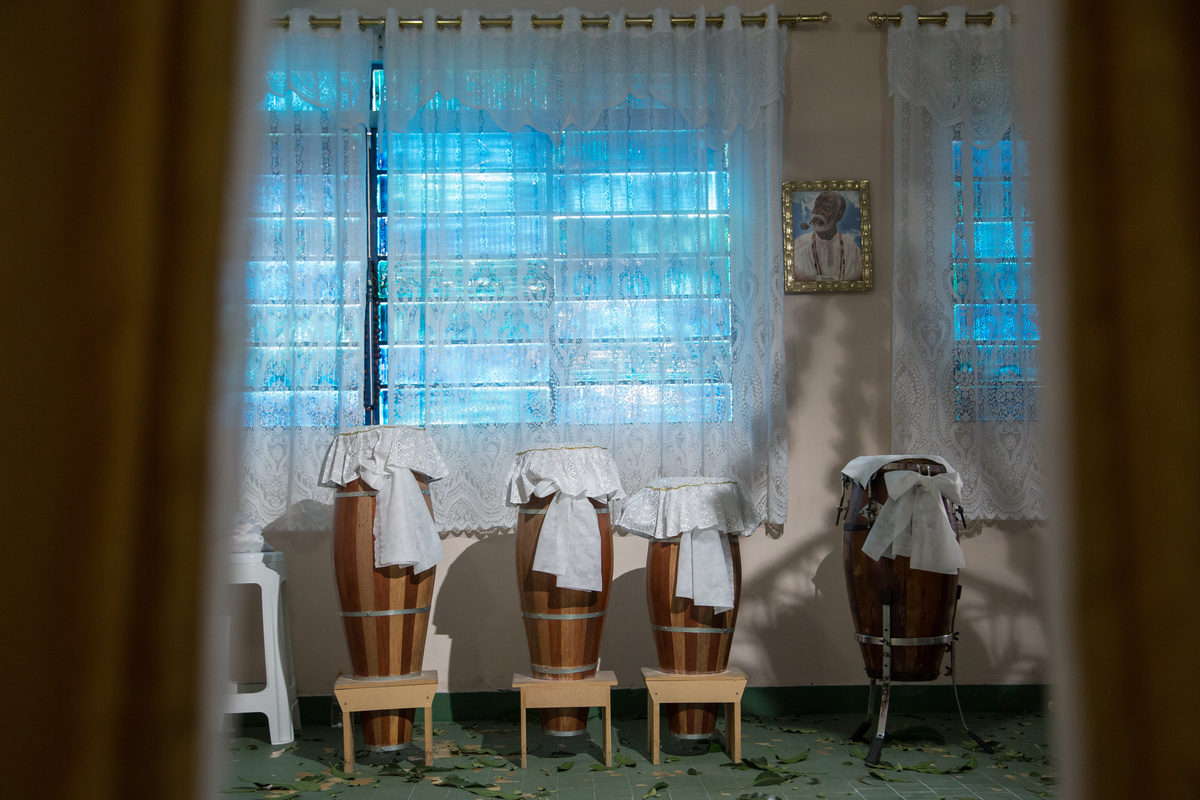
Umbanda was born in the municipality of Niterói, within a spiritist federation, by a Brazilian Caboclo incorporated into a Catholic medium who announced that from that moment on a new religion would open in the earthly world, where all spirits would be accepted to manifest themselves.
The sentence said by him is nationally known in Umbanda: "With the most evolved we will learn, to the less evolved we will teach, but to none we will turn our backs".
Importing the Orixás from the African pantheon, with Catholic altar, Shamanic practices and its own entities, Umbanda has grown and developed over all these years, maintaining many of its fundamentals and incorporating others. Umbanda is a living religion that provides a unique experience in each terreiro, bringing a plurality that enriches the religion.
The history of Umbanda is preserved in all the centers of the religion and below you will learn the true story of this religion, how it was born, what are its origins and spiritual references.
How Umbanda was born
On November 15th 1908, in the city of Niterói, Rio de Janeiro, the family of Zélio Fernandino de Moraes took him to the Spiritist Federation of Niterói because of episodes related to mediumship. Zélio had started several times to bend over and act like an old man, in other occasions he could barely get out of bed, and by the orientation of a priest they went to that place.
When starting the session, that boy of only 17 years old, gets up, goes to the garden and comes back with a flower, putting it on the table he exclaimed: "a flower was missing", that was not a habit of the sessions, but without objection she continued, and when it was directed to Zélio to take a mediumistic pass he incorporates the spirit of a Caboclo, spirit that was not welcome in the sessions of that time.
The leaders of the session then asked that spirit what his name was, and what he was doing there, and in a serene but firm way the caboclo answered: "If I need a name, then call me Caboclo das 7 Encruzilhadas, because to me no path is closed. I am here by order of the astral to found a new religion that will be brought to the material plane through this device".
When asked if there were not already many religions he answered "In this religion all the spirits that want to manifest themselves to practice charity will be accepted, with the most evolved we will learn, to the less evolved we will teach, but to none we will turn our backs".
It is noteworthy that the incorporation of Caboclos and Pretos Velhos, already existed long before that day, but to manifest in some religions were despised for not being part of the pantheon that religion worshiped.
The next day at Zélio's house many people gathered to witness a new incorporation of that Caboclo who brought new information of that new religion, and then the manifestation of a Preto Velho called Pai Antônio who introduced more fundamentals. After that day, similar manifestations with the same objective happened in various parts of the country, and thus Umbanda was born innational territory of Brazil.
The slaves' calundu
In 1685, the slaves practiced the Calundu, with the syncretism between African beliefs, with the Indian pajelança where they used the Catholic syncretism to circumvent the persecution of the elites and the church. This community arose through the batuque circles, where the slaves danced and played atabaques in their spare time.
Calundu divided into two branches, Cabula and Candomblé de Angola. Cabula kept in its cult Catholicism, the indigenous Pajelança and added the Kardecist spiritism. The other branch elaborated a little more its rituals with the African cult, but kept the Catholic syncretism to avoid the persecution of that time.
The Cabula
Cabula is a cult that preceded Umbanda, known by some as the Grandmother of Umbanda, it was the first organized rite that mixed pajelança, European culture and black culture of the time. With the first records showing its beginnings in Salvador, passing through Espírito Santo, until finally arriving in Rio de Janeiro.
In the ritualistic structure of Cabula one can find many words used today in Umbanda. Although it is a cult that in essence is not so similar to Umbanda, one cannot deny its points in common. Umbanda is currently experiencing a recovery of this side of its origin, since thanks to the persecution that these cults suffered, it ended up disassociating itself from these cults.
Cabula Bantu
This cult was created and spread in Espírito Santo, Cabula is a cult that suffered much persecution, for its initiatory and closed character where little was known what was done within the cult and mainly for having a social revolutionary side, the founding leaders of this cult, gathered financial resources to fund black children in schools, and this bothered the white elite of thetime.
Due to persecution, this cult ended up being gathered inside the homes of its practitioners and becoming even more closed, causing it to be forgotten by society and erased from history. However, this tradition remains alive with some practitioners who now spread their knowledge, showing that the cult was not extinguished and remains alive today.
The popular Macumba
The name Macumba has permeated the popular imagination for decades, almost always associated pejoratively. This did not happen by chance, this "demonization" of the word Macumba, is due to the racial prejudice that permeated the middle class of Rio de Janeiro in the 20th century. In the 19th century it is possible to find newspapers advertising parties where the army orchestra would play the instrument Macumba.
What happened to change this reality? Simple, the blacks used this instrument in their religious meetings where the dance was the main way to unload the energies, and this manifestation began to be seen with bad eyes by the elites of the time, who did not accept to see that manifestation happening, so the same newspapers gave a sense of black magic to the word Macumba, and thissense continues as true in the mind and in popular folklore.
The rituals called Macumba were an amalgamation of the Cábulas, in the lands of Rio de Janeiro, which had the magical practices gathered from Catholicism, Spiritism, Pajelança, Arab, Jewish and Gypsy cultures. The so-called Macumbas had the characteristic of the party, the touch and dance in its ritual, being considered sacred, and a moment to discharge the accumulated negative energies.
The rites of Umbanda
Umbanda did not invent anything new, it imported practices from several millenary religions in the world and brought them into its ritual, attributing its own vision and fundamentals. Umbanda is a monotheistic religion, that is, it believes in only one God, the orixás within Umbanda are divinities that represent the factors of God, such as: Faith, Love, Knowledge and so on.
The mediumistic sessions inside Umbanda are called Giras, in these sessions happens the praise to the Orixás, in this moment occurs the rite of "beating head" where the practitioners reverence the altar in form of respect. Another common practice in the terreiros is the defumação, where through herbs burned on charcoal coals, generates a smoke to purify the environment and people.
All gira is accompanied by "pontos cantados" which are praises through music, which may or may not be accompanied by an instrument (usually the atabaque) or simply in the palm of the hand. Some diagrams are drawn on the ground with the power to open magical portals or to identify the guide who is on earth, which are called "pontos riscados".
In Umbanda there is also the ritual of baptism of the children of saint and offerings to the guides and the Orixás, these offerings have as objective to thank for some blessing or to ask for the strength of the Orixá in your life. For cleansing and spiritual healing are used the passes and in some cases is made a session of discharge, where it is removed some spirit that does harm to the person.
The ancestral entities
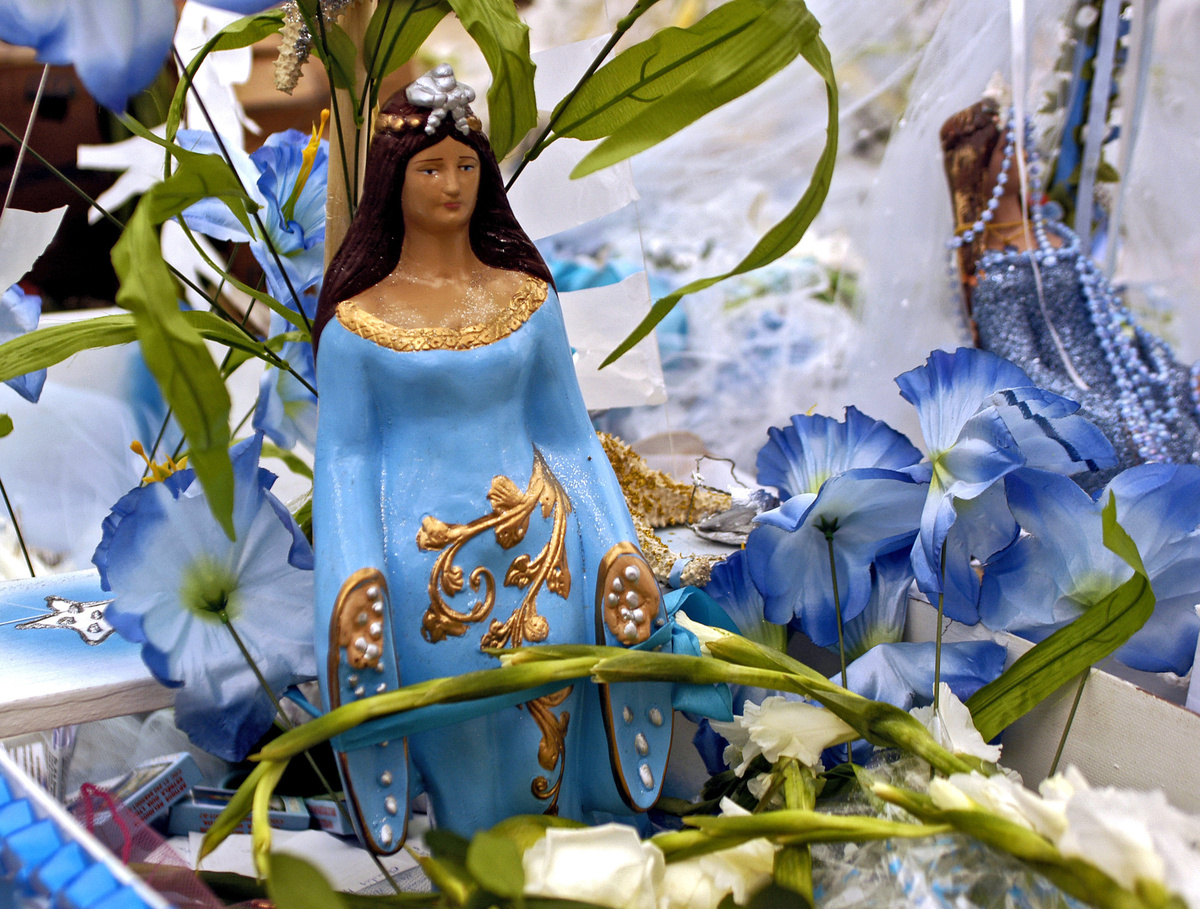
Umbanda in its foundation opened the doors to all spirits who wanted to manifest themselves in favor of charity, these spirits through affinities, gathered in groups called lines of work, in turn these lines of work assume a single archetype, to identify the degree and manner of action, thus arose the symbolic names in Umbanda.
These names represent in the energy of which Orixá that line works and what is its field of action, within these lines hundreds of sub-lines were created, which are called phalanges. A spirit of evolved degree is assigned to a line of work and a specific phalanx, starting to use the name, the way and the tools of work of that phalanx, by affinity. Know now which arethese entities and their main characteristics within Umbanda.
Caboclo and Preto Velho
The caboclos and pretos-velho are considered the lines of work with the highest evolutionary degree in Umbanda, they are spirits of Indians and black slaves. However it is worth mentioning that this is an archetype of these lines, not all caboclo was Indian and not all preto velho was slave or black, but all spirits of this line have a high evolutionary degree because they are part of the triad of Umbanda along with the Erês.
Caboclo and Preto Velho are strong, wise entities who possess great magical knowledge. They work with herbs and all kinds of magic in order to bring understanding to their consulters, spiritual cures and promote the spiritual development of mediums. They are excellent for giving advice and guidance, they are true friends in the spiritual realm.
Turning Dove
Pomba Giras in Umbanda is the representation of female empowerment and strength. She presents herself as calm, cheerful and fun, but also in a strong, independent and self-confident way. For these reasons, Pomba Gira was vandalized for a long time by people who felt threatened by women with this kind of empowerment.
They are great companions and friends, always willing to help in times of need. Pomba Gira acts in the emotional field of being, helping to have self-esteem, to deal with their emotions, to prepare for difficult times and of course in love, but contrary to the imaginary, she does not bring anyone back, she gives you the emotional balance and thus acts in you, making you accept what has passed,balance to maintain or provide courage to conquer something new.
Naughty
The Malandros in Umbanda have as their main representative Seu Zé Pilintra, dressed in a suit, shirt, shoes and white top hat, what stands out is his red tie, paying homage to the old sambista of Lapa in Rio de Janeiro, or the Capoeirista on the streets of Salvador. Zé Pilintra is that man, who despite all the difficulty never lost faith in God and in people.
He helps you see life from a different angle, shows you that despite all the difficulty, in the end everything has a way and that with a lot of faith and hard work you can overcome your challenges.
The naughtiness is in being fair, true, and never lower your head, that no matter how difficult it may be, joy and faith will help you in the step by step of your journey.
Cattleman
The Boiadeiros line in Umbanda represents the people of the backlands, the cowherds, the man of the field who spent days and nights driving the cattle from one place to another. They are wise and powerful cleaners of the astral, releasing all and any kind of spirit that is in order to torment against the Divine Law, they are loyal and protective, always willing to help their mediums and consulents.
Gypsies
The Gypsies bring the power of the road, of the sun and the moon, there is no knot that they do not untie and no pain that they do not cure. It is a line of work that arrived in a reserved way in Umbanda, presenting itself in the line of Exu and Pomba Gira, but they were welcomed by the astral and the children of Umbanda and today have their own line of work, with their archetypes and foundations.
Corresponding Catholic syncretism
A heritage brought to Umbanda by the nation cults is the syncretism between the Orixás and the Catholic Saints, this syncretism happened because of the prejudice of society with the Afro culture, however until today, it is common to find in most Umbanda altars the image of Catholic saints, some of the correspondences made between the cultures are:
- Oxalá - Jesus Christ
- Oxóssi - Saint Sebastian/Saint George
- Oxum - Our Lady of Aparecida
- Ogum - Saint George/Saint Sebastian
- Xangô - Saint John the Baptist
- Obaluaiê - Saint Lazarus
- Yemanjá - Our Lady of Navigators
- Iansã - Santa Barbara
- Nanã - Saint Anne
- Ibeji - São Cosme and São Damião
The ramifications of Umbanda
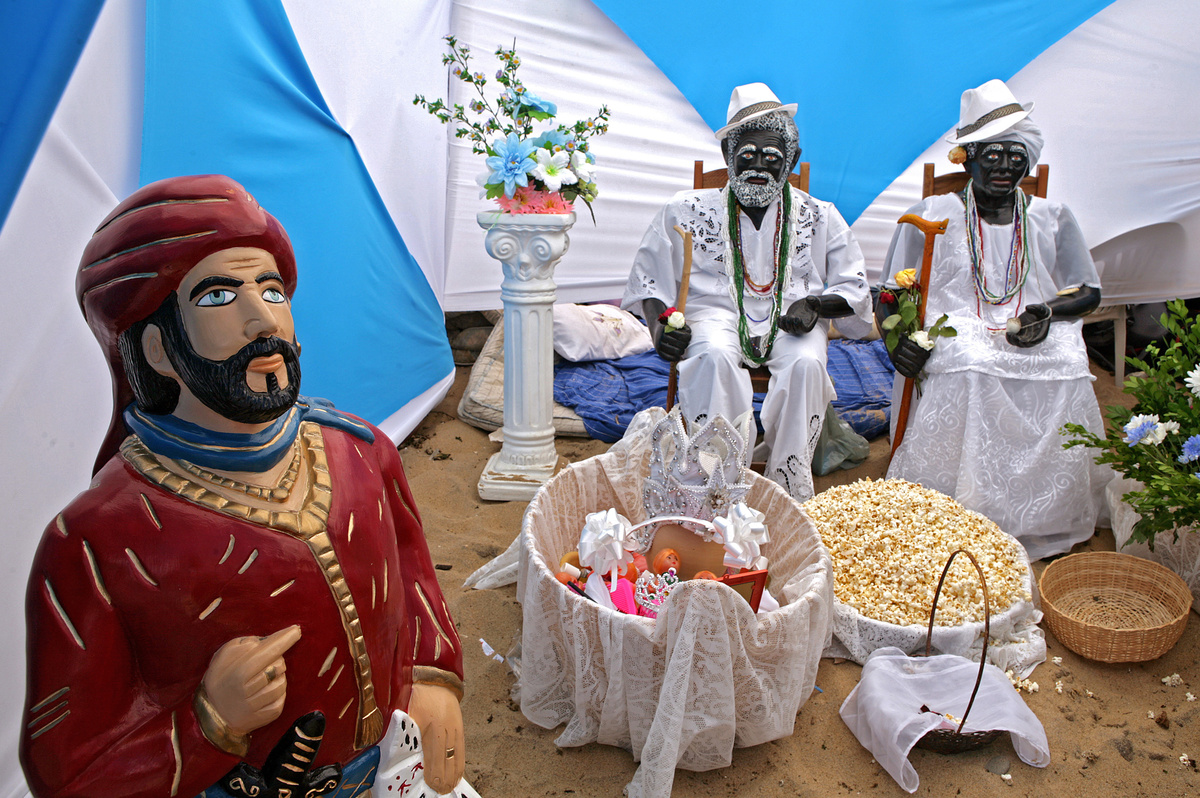
Umbanda seems to have a positive resistance to hierarchization, in Umbanda there is no single command where everything is decided by everyone. It makes a point to remain plural, particular and above all without human ego. That's why you will never find two Umbanda centers exactly alike, the practices and rituals are changed in their details by individuality.
In the ideological field, there are some branches that explain Umbanda in a particular way and gather around them those adepts who identify themselves most, in Umbanda no one is helpless, if the way of work of a terreiro does not match the energy of the visitor or consulter, there are several others to know. Now get to know each of these branches and their main fundamentals.
White Umbanda and demand
The term Umbanda Branca and demand are used by some to describe the branch of the founder of Umbanda Zélio Fernandino and the Caboclo das Sete Encruzilhadas, however the most accepted name for the branch is traditional Umbanda.
The White Umbanda and Demanda, on the other hand, would be presented with more fundamentals of the spiritism of Allan Kardec's work, some elements were removed such as smoking, atabaque and drinks, besides working with a smaller number of entities as well.
Popular Umbanda and Umbanda Omolocô
Popular Umbanda and Omolocô are two branches of Umbanda that bring with them African ancestry. They are the introduction of Umbanda into Rio's Macumbas, Cabulu Bantu and Nação cults. They bring the ritualistic drumming and works directed to all Umbanda lines, and the way of worshiping Candomblé's orixás, as well as their garments and hierarchy within the terreiros.
Umbanda of Souls and Angola and Umbanda of the Caritas
Umbanda de Almas e Angola brings precisely the fusion of Umbanda entities with the ritualistics of the Soul and Angola cults that took place in the slums of Rio de Janeiro. Umbanda took on the role of embracing these cults that were on the margins of society and just like one, managed to have their voice heard and continues to this day.
Umbanda de Caboclo, Umbanda Esoteric and Umbanda Initiatic
These variations (Umbanda de Caboclo, Umbanda Esotérica and Umbanda Iniciática), are greatly influenced by western esotericism (and a little oriental). Its first school was the Primado de Umbanda and was practiced inside the Tenda Caboclo Mirim, it brings a structure of initiatic degrees for the mediumistic development, written by Oliveira Magno and also received contributions of Tata Tancredo andAluizio Fontenelle, old Umbanda writers.
Sacred Umbanda
Rubens Saraceni, the greatest writer of Umbanda, explains the fundamentals of Umbanda with less fundamentals of other religions, he brought the Theology, Cosmology and Theogony of Umbanda so that even practitioners of other religions use some parts presented by him to explain particular issues of Umbanda.religion.
What is the importance of the National Day of Umbanda?
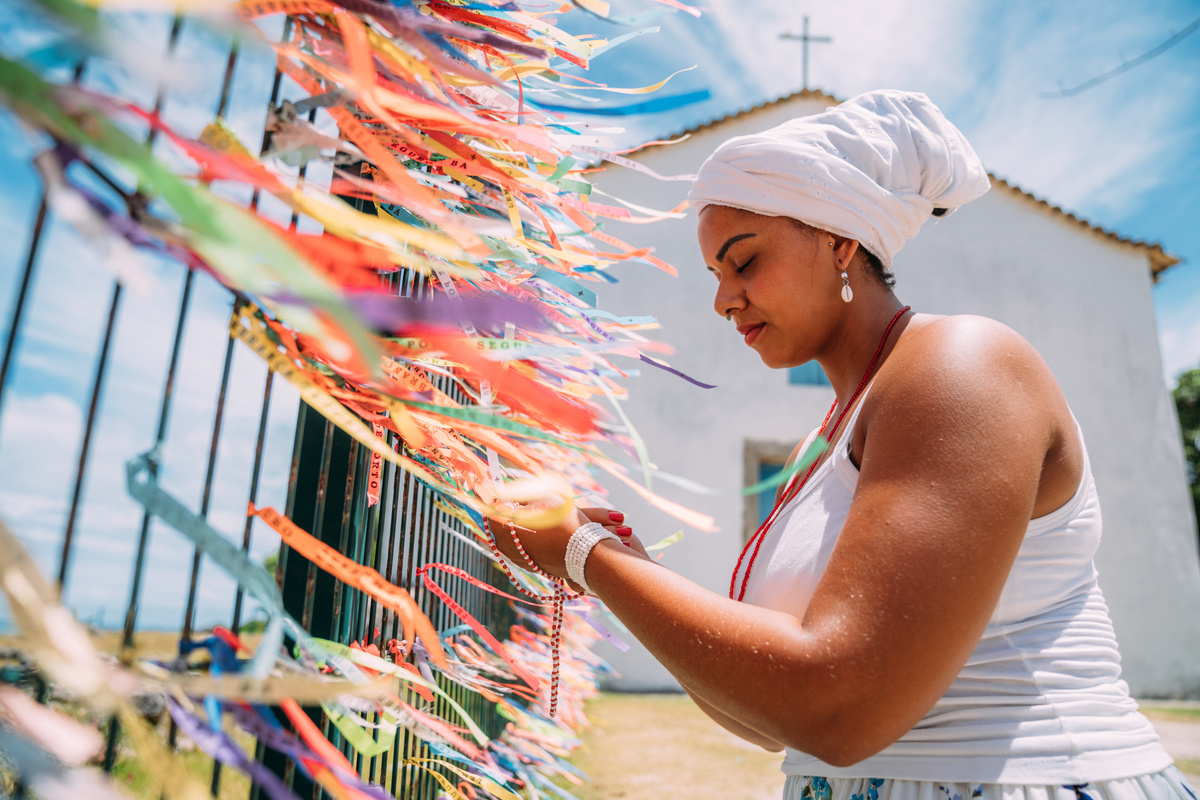
This day was already celebrated by Umbandistas a long time ago, but having this day made official on the federal agenda brought recognition to the religion and was seen as a great victory among Umbandistas who had long been treated on the margins of society. A Brazilian religion that preaches equality and fraternity, always practicing the good and charity.

